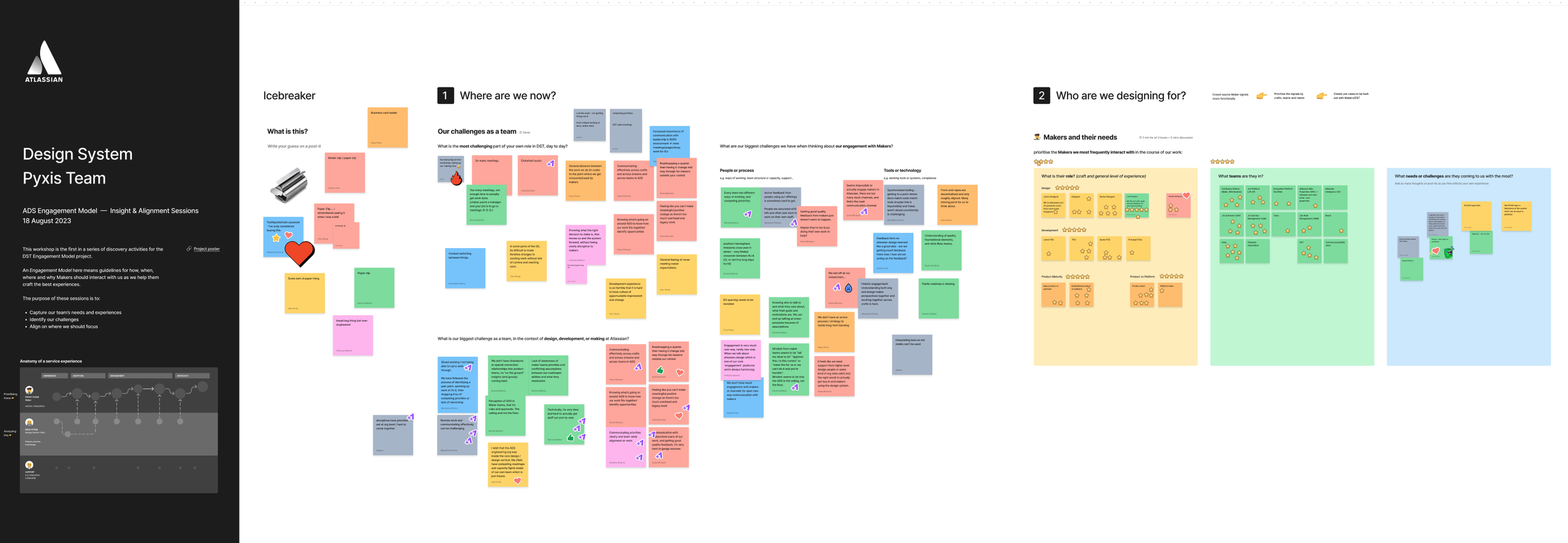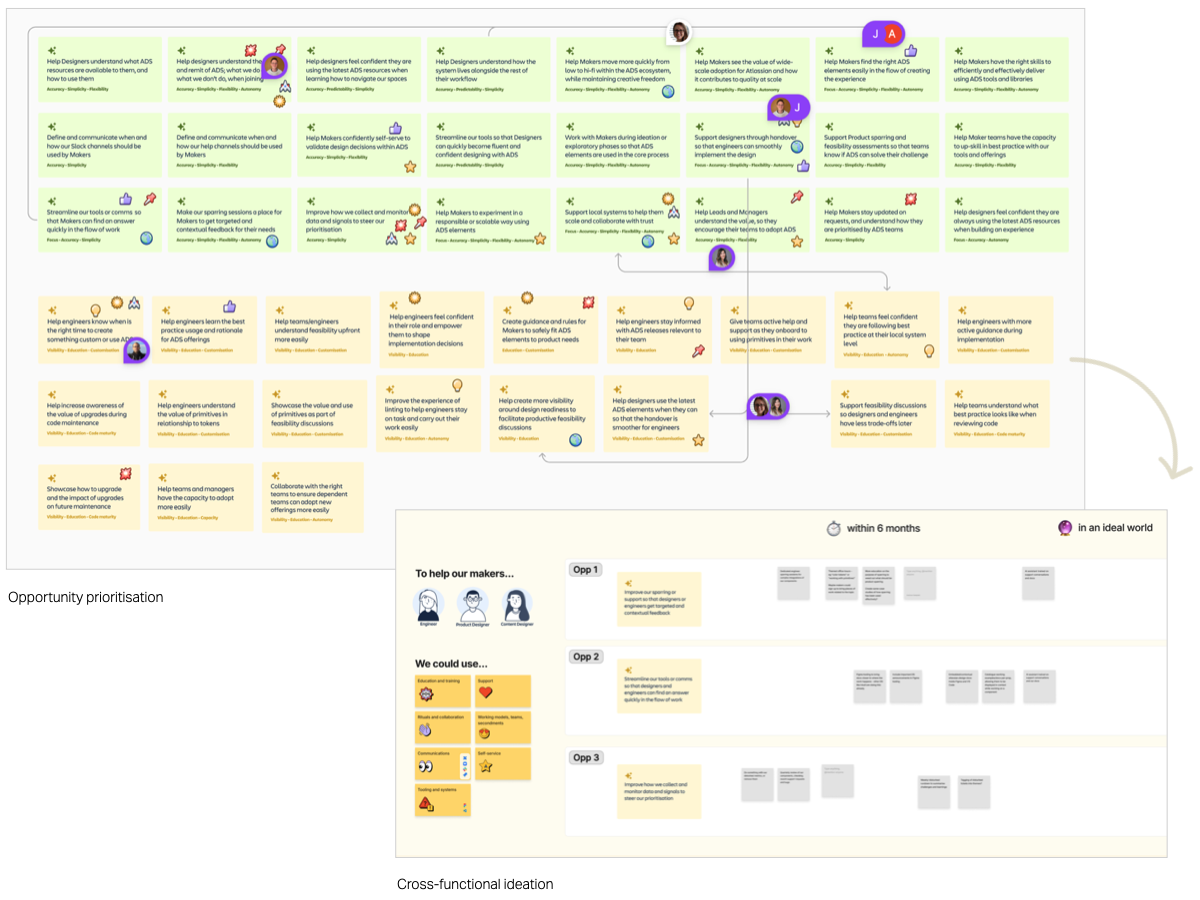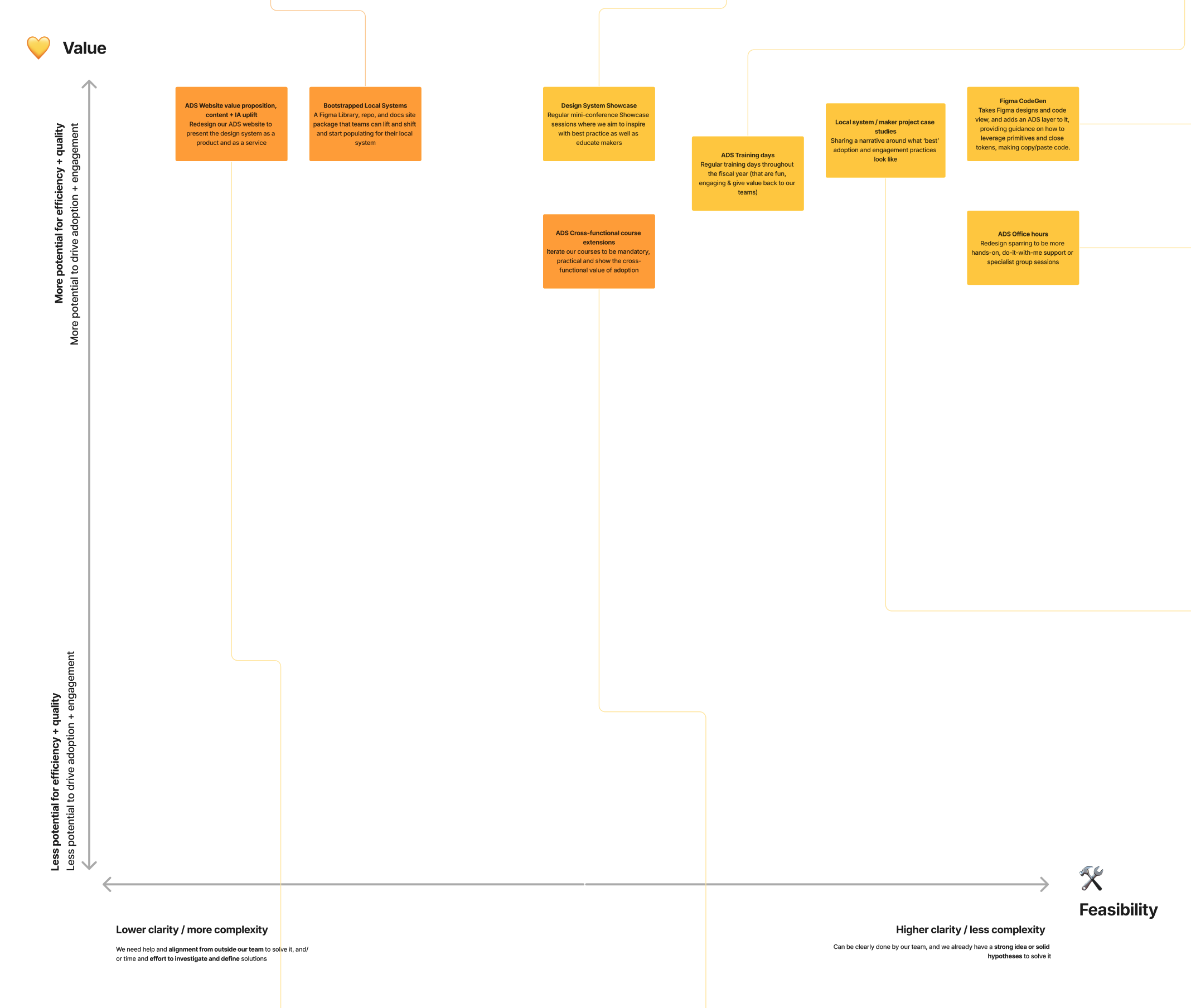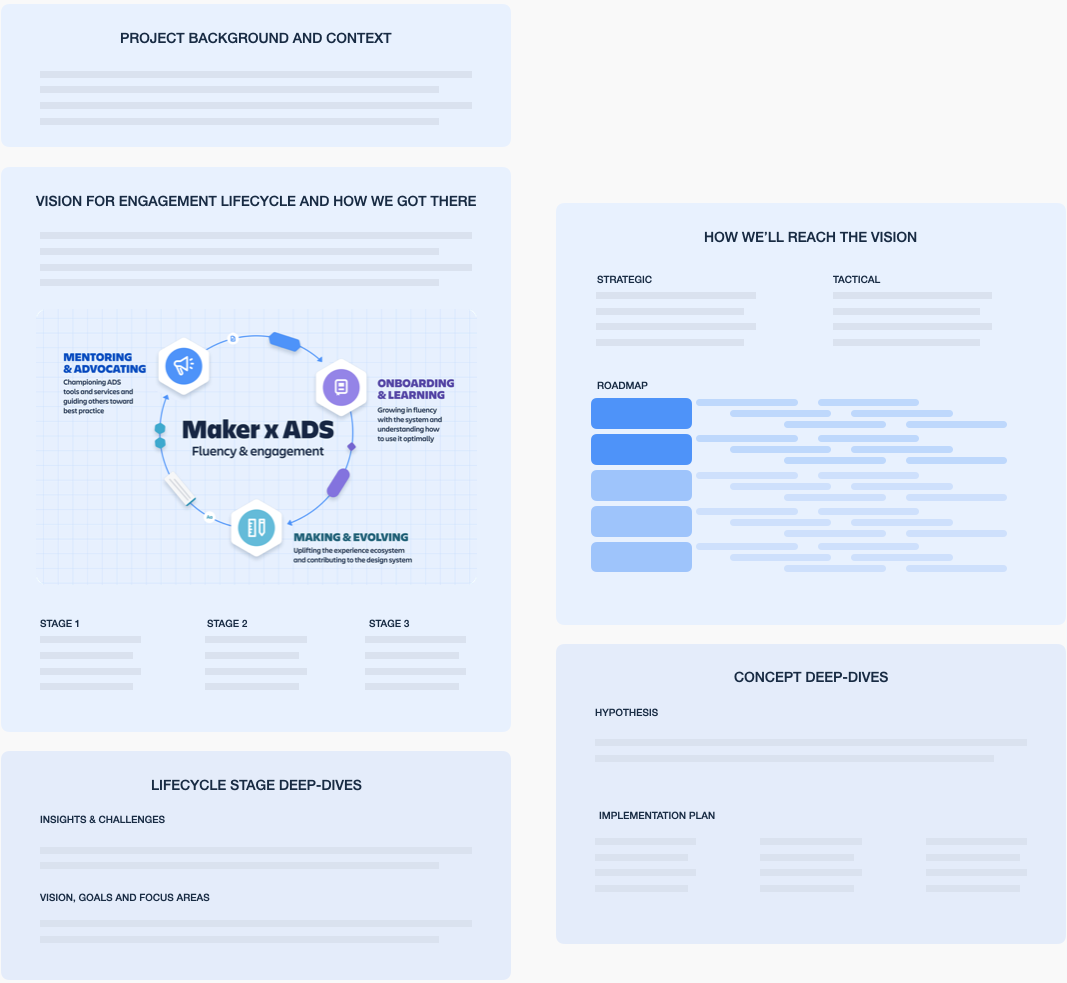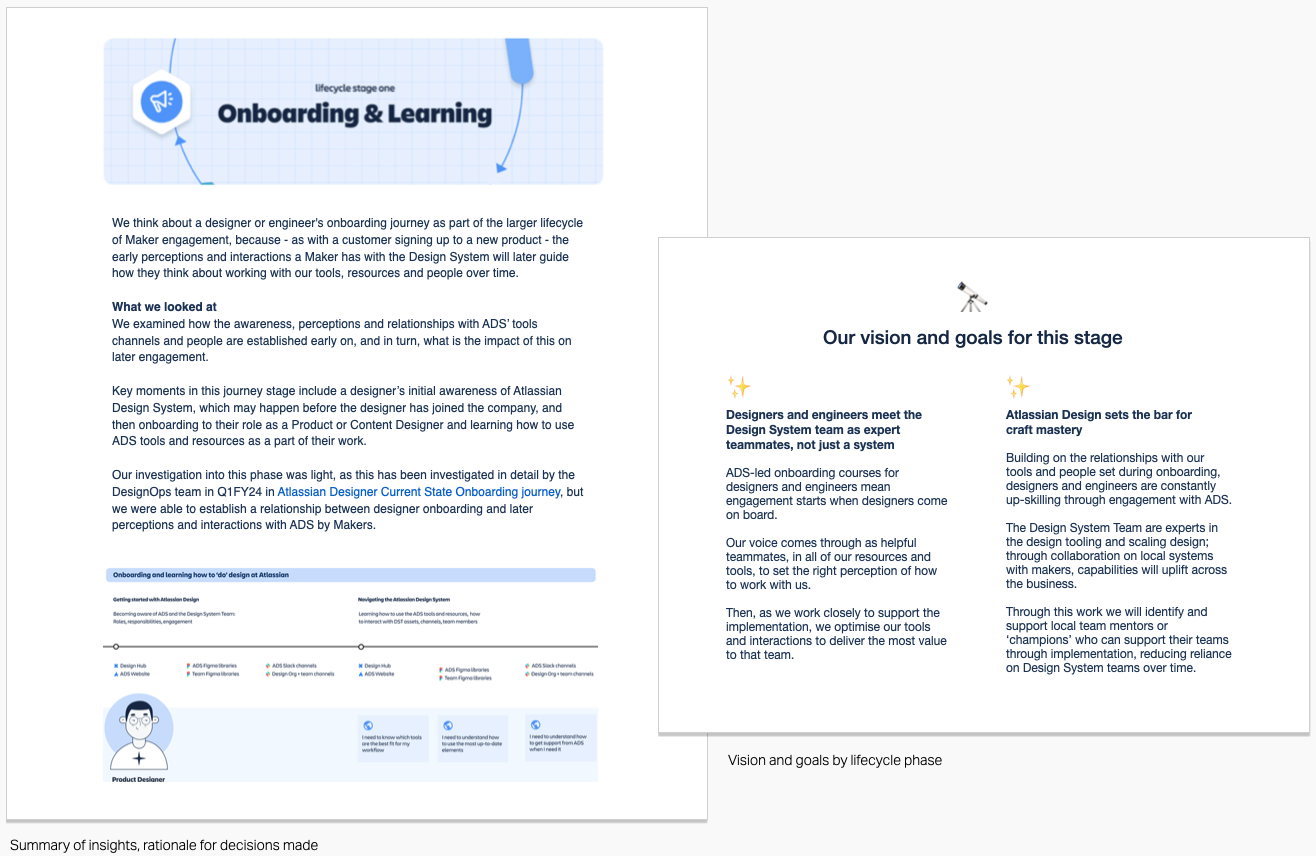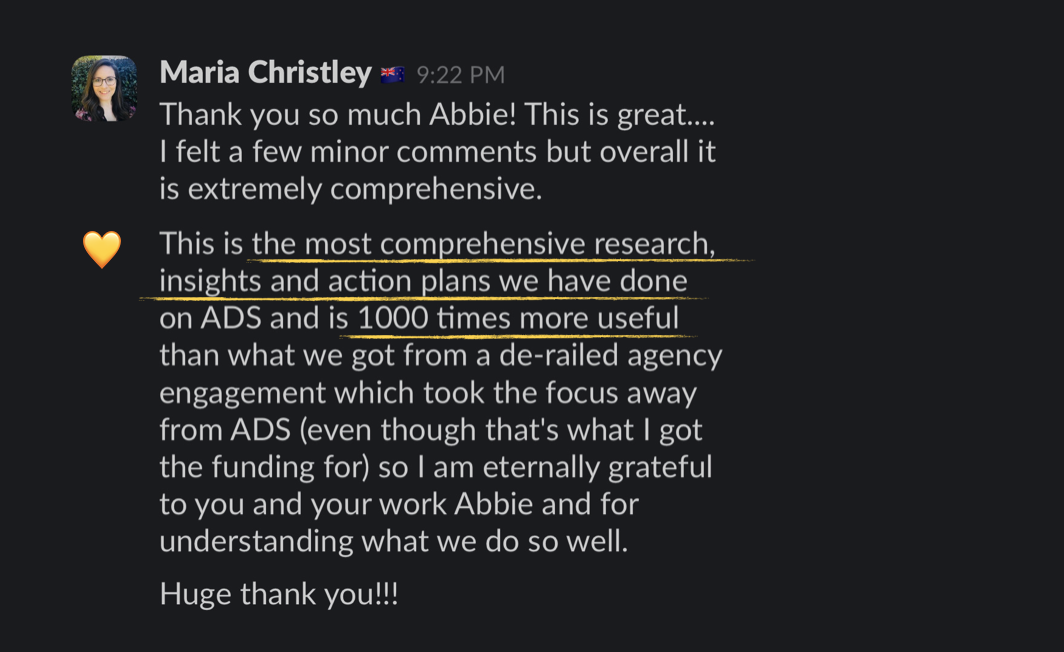shaping the atlassian design system as a service
Lead Service Designer ∙ 2023 - 2024
Research ∙ Service Design ∙ Experience Strategy ∙ Craft Leadership & Mentoring
Atlassian brought me on to define the engagement model for the Design System team, bridging the gap between the team - their people, tools and processes - and internal product teams, to enhance collaboration and improve efficiency.
Atlassian is a complex ecosystem of products that has grown quickly. The Design System team’s challenge was to prioritise work to meet maker needs more effectively, ensuring cohesive UI across the product ecosystem.
As the founding craft lead, my role was to introduce service design tools and practices, and coach product designers on active projects.
Project definition & team discovery
After discussions with key stakeholders and analysing recent research, I ran a series of cross-craft discovery workshops with the three Design System teams to:
Understand their core challenges, to map backstage interactions and pain points
Prioritise maker archetypes to focus on
Audit their touchpoints and understand their experience ecosystem
MAKER DISCOVERY AND ANALYSIS
The project had begun with a hypothesis, that product teams did not know how or when to engage with the Design System team for help, but by looking at the lifecycle of product creation we discovered this was only part of the story.
Through 1:1 qualitative interviews, first with designers and then engineers, we uncovered new insights, specifically around:
workflows and tools in product creation, when they intersect with the Design System (and when it doesn’t)
perceptions of the team, its role and remit and how this impacts collaboration or adoption of the system
behaviours of design and engineering teams, when in a learning state and when under pressure
key drivers of successful engagement and adoption of the Design System in teams, that we might harness or scale.
By sharing insights and quotes back to the Design System team through the process, they were able to see the impact of their work and understand the landscape in real time.
Soon we had an end-to-end view of design and engineering needs, challenges and opportunities from their initial onboarding, through the process of product creation, up to stages craft leadership or mentoring others - for example, as a manager.
MAPPING THE LIFECYCLE & creating our experience vision
By looking at maker needs through a CX lens, end-to-end across an engagement lifecycle, we were able build a holistic vision for engagement with the Design System over time.
We imagined a partnership where the Design System team and makers collaborate as experts with distinct roles, but with shared responsibilities for the craft.
We built our experience vision on our maker needs from research, and the principles and objectives of the core Design System team strategy.
PRIORITISING OUR FOCUS areas for action
Bringing together our design and engineering insights for cross-functional impact, I led an opportunity prioritisation with team leads and design managers.
Into the mix we brought all the work from our current roadmaps to see how we could amplify or reassess them in light of our findings.
From our research it was clear that tooling was a key part of the story, but we should also double down on sharing expertise and getting closer to teams, by formalising local systems in product teams.
With all our Design System designers, engineers and stakeholders, we co-created, refined and prioritised concepts for our high-value opportunities, against short term and longer term horizons, to ensure our ideas could be realistically achieved.
Delivery of the insights and action plan
experience strategy and action plan
With the engagement drawing to a close, I worked with the design leaders and managers to ensure the work could live on as a central guide to the Design System team’s quarterly planning.
In true Atlassian style, this was in Confluence and published at an organisational level.
I drafted a wireframe and plan for the experience strategy, including;
Our vision for the maker experience across the lifecycle
Summary of insights and opportunities for each lifecycle stage
Experience strategy and principles
Prioritised roadmap of initiatives
Concept hypotheses, and action plan for teams to begin experimentation and continue maker discovery
outcome
Beyond rave reviews from a happy client, the work to be done was clear and lined up on the roadmap.
Where previously quarterly planning had been more organically structured, now the team has been able to take the experience strategy and roadmap forward into quarterly planning, with clear links to adoption OKRs.
By creating hypothesis testing and investigation frameworks as a part of the action plan, the team can stay close to makers and continue to build a bank of maker needs through this work - ultimately creating closer working relationships, improving happiness at work and overall quality of the products.

